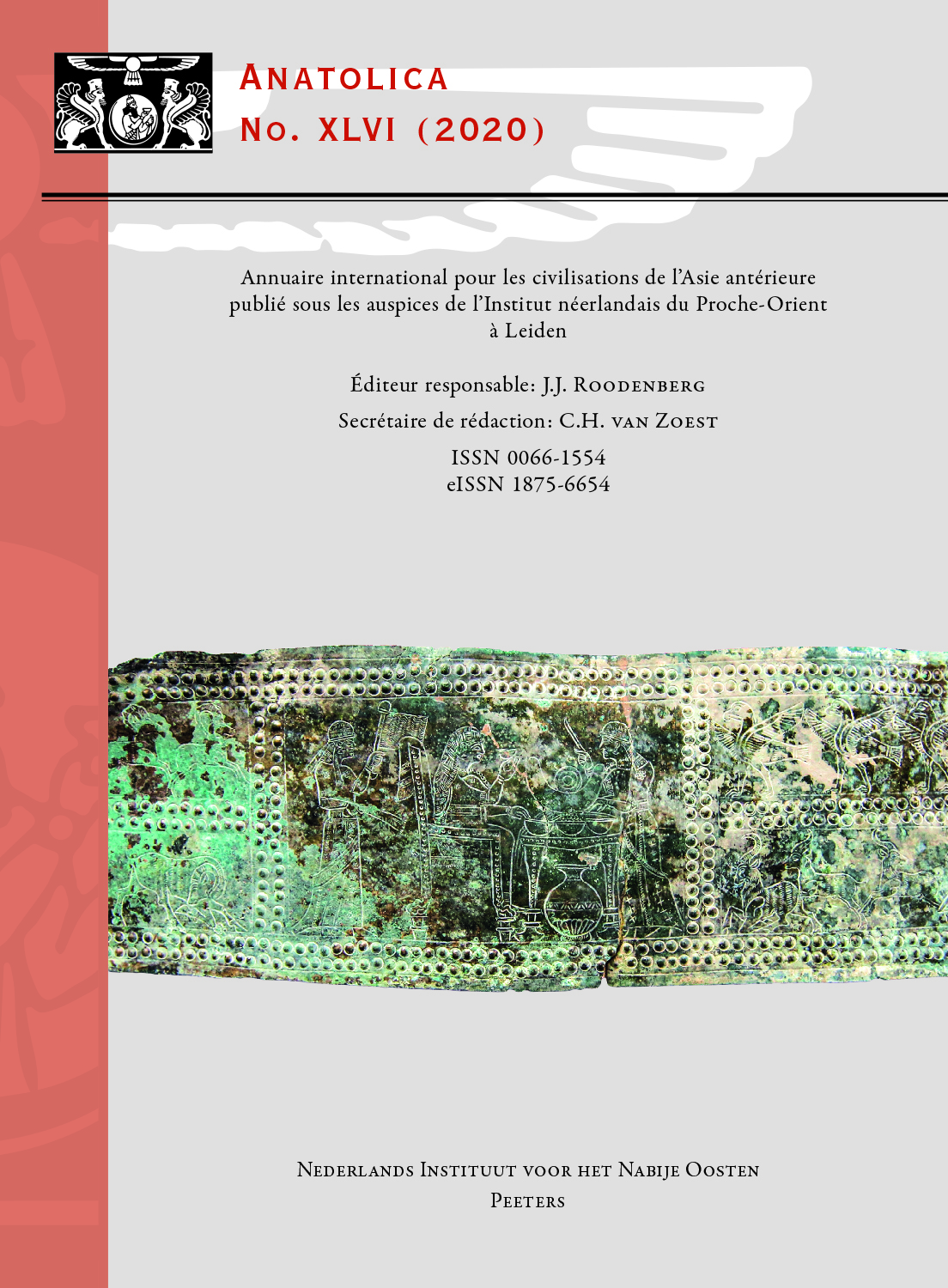 previous article in this issue previous article in this issue | next article in this issue  |

Preview first page |
Document Details : Title: The Bronze Age Cemetery of Gâvur Evi Tepesi, Southwestern Turkey Author(s): VANDAM, Ralf , KAPTIJN, Eva , POBLOME, Jeroen , WAELKENS, Marc Journal: Anatolica Volume: 39 Date: 2013 Pages: 241-259 DOI: 10.2143/ANA.39.0.2990789 Abstract : During the 2011 Sagalassos project survey, a Bronze Age pithos cemetery was discovered in the vicinity of the multi-period site of Gâvur Evi Tepesi, in the Burdur Plain, SW Turkey. Despite ongoing quarrying of gravel at the cemetery, several in situ pithoi were found. The following paper is the first report of our work at this cemetery and discusses and contextualizes the findings at Gâvur Evi Tepesi. Furthermore it illustrates how the cemetery belongs to a more widespread tradition attested at similar contemporary cemeteries in Western Anatolia: the deceased were interred in pithoi closed with large stone slabs and oriented to the E/SE. A study of this cemetery suggests that it was used during the Early Bronze Age II (2600-2300 BC) and Middle Bronze Age (2000-1450 BC) since some pithos burials associated with fine ware from both periods were recovered. Six different pithos types were identified ranging from neck pithoi to rib pithoi. In addition, this paper considers the Gâvur Evi Tepesi cemetery and its settlement within the broader Early Bronze Age social landscape of the Burdur Plain. It is clear that in this period this plain witnessed an increase in human settlement density and the development of a distinct settlement pattern: multiple village-type settlements with discrete cemeteries, located close to water and agricultural land. Ultimately, the research in the Burdur Plain faced also problems with regard to the recognition and definition of local EB phases among which the EB III. |
 |


